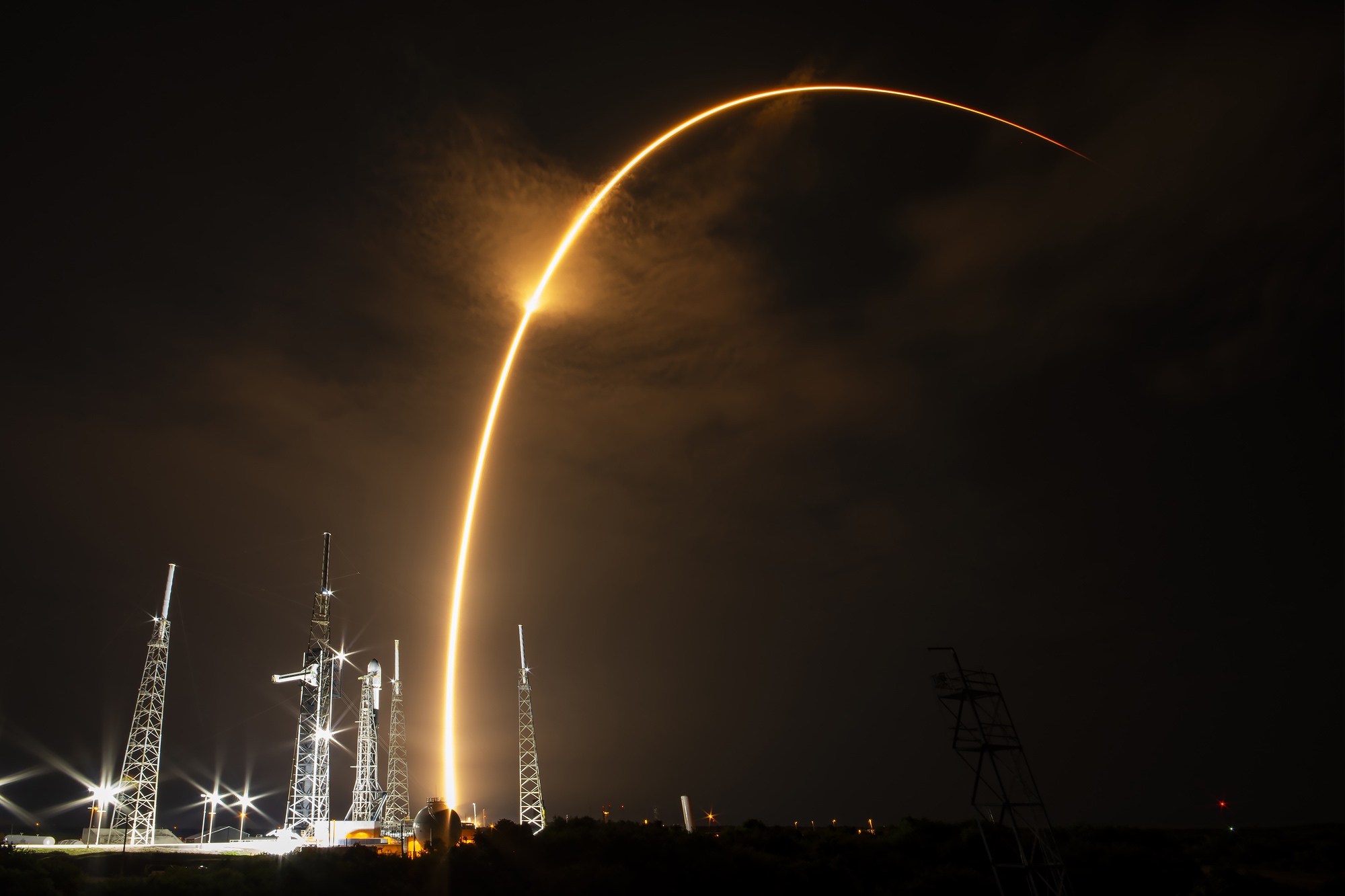WASHINGTON — SpaceX’s Falcon 9 successfully launched a set of Starlink satellites early July 27 on the first flight of the vehicle since an upper stage anomaly 15 days earlier.
The Falcon 9 lifted off from Kennedy Space Center’s Launch Complex 39A at 1:45 a.m. Eastern. The company confirmed the successful deployment of its payload of 23 Starlink satellites a little more than an hour later.
The launch was the first for the Falcon 9 since a launch late July 11, also carrying Starlink satellites. A liquid oxygen leak in the rocket’s upper stage prevented the stage’s Merlin engine from performing a second burn to circularize its orbit, stranding the 20 Starlink satellites in orbits too low for them to survive.
SpaceX announced July 25 that it traced the leak to a crack in a sense line for a pressure sensor in the upper stage. The crack was caused by fatigue from engine vibrations as well as a clamp that was ineffective in constraining the line. SpaceX said it will remove the line as a near-term fix as the data from the sensor is not needed.
The leak caused what SpaceX called “excessive cooling” of engine components. That included the ignition fluid, called TEA/TEB, that is needed to restart the Merlin engine. “It moved through its line, because it was too cold, too slowly,” said Sarah Walker, director of Dragon mission management at SpaceX, during a July 26 NASA briefing about the upcoming Crew-9 mission to the International Space Station. “Without that ignition fluid present at the time when the fuel and oxygen started mixing, that caused damage to a number of components on the engine.”
The ”hard start,” as the engine anomaly is called, did not cause widespread damage to the stage, she said, allowing it to deploy the satellites and passivate itself. “But there were a handful of components on the engine that were damaged, which did not allow it to complete that second burn.”
SpaceX is scheduled to perform two more Falcon 9 launches on July 28, one from Cape Canaveral Space Force Station and the other from Vandenberg Space Force Base, each carrying Starlink satellites. The first non-Starlink customer for Falcon 9 since the anomaly may be NASA and Northrop Grumman, with the launch a Cygnus cargo spacecraft on a Falcon 9 from Cape Canaveral scheduled for as soon as Aug. 3.
NASA closely followed the SpaceX investigation into the upper stage anomaly. “SpaceX has been very transparent,” said Steve Stich, NASA commercial crew program manager, at the July 26 briefing, with NASA teams embedded into the investigation.
He said the agency agreed with the outcome of the investigation and the planned fix. The sense line that cracked, he said, “was potentially a little under-designed, I would say, for that environment.” The removal of the sense line will go through a “rigorous certification” that includes reviews of changes to vehicle software that no longer will use data from that sensor ahead of the Crew-9 launch, currently scheduled for no earlier than Aug. 18.
He said this incident emphasized that even small elements on a vehicle can have major implications. “SpaceX made a small change to a different transducer” that provides pressure measurements on the same sense line, without knowing how sensitive that line was to vibration, along with removing a clamp. “It was a small change that you would think would be innocuous,” he concluded. “It’s a good lesson learned for all of us in human spaceflight, and spaceflight in general, that small changes matter.”
Both the SpaceX statement about the failure investigation and Walker’s comments at the NASA briefing described the removal of the sense line as a near-term fix. Asked what a long-term fix might entail, Walker referred to a report coming soon on the investigation into the upper stage anomaly. “There’s a number of actions that will be coming up for us in the coming weeks,” she said, but did not elaborate on what those actions might be.
Related
Read the original article here
